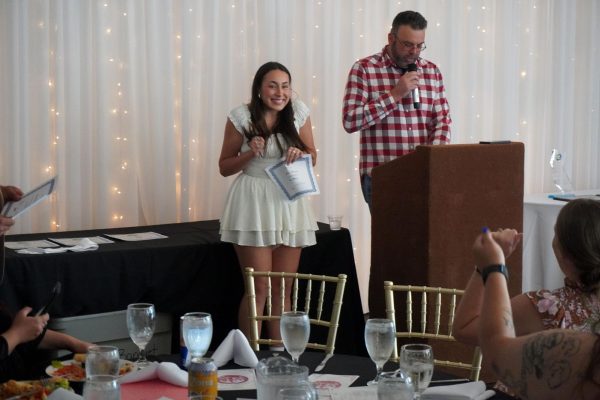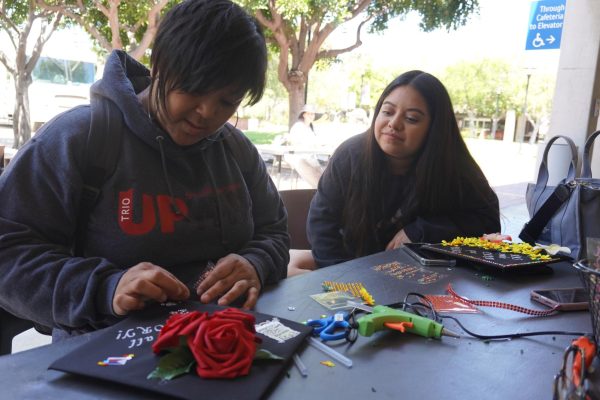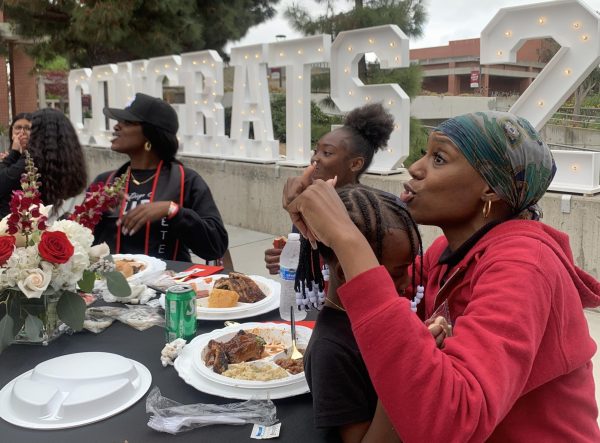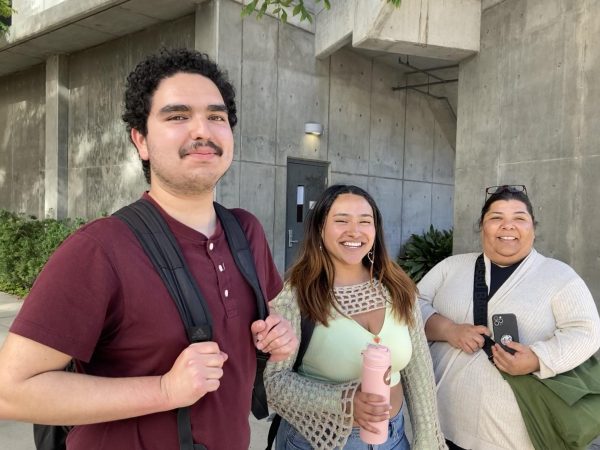Rethinking how we experience coffee at City College
The science behind coffee as explained by City College’s SACNAS chapter

Image from pre-med student and member of SACNAS chapter Dyani Melgarejo’s presentation about coffee. Screenshot from Zoom.
November 5, 2021
The World Cultures Program hosted a Zoom event that featured presentations made by students belonging to City College’s national-award-winning SACNAS chapter.
SACNAS (Society for Advancement of Chicanos/Hispanics and Native Americans in Science) is an organization dedicated to fostering the success of scientists from college students to professionals in attaining advanced degrees, careers, and positions of leadership.
Several students presented their research about the science behind coffee.
Among the students that spoke of the physiological effects on the body was aerospace engineering major and secretary of the chapter Shalayah-Naomi Webb.
She explained that coffee is not only addictive due to its caffeine content but that it has other effects on the body as well.
“It has several effects on the body,” Webb said. “Among those effects is that it is a diuretic, so it gets rid of extra salt and water by making us go to the bathroom more and it stimulates our central nervous system, which is what gives us that extra jolt in the morning to feel more awake.”
After presenting her slides, Webb played a quirky homemade video of her brewing coffee with her makeshift siphon brewer. The video featured chemistry lab ware, a bunsen burner, personal protective equipment and of course, coffee.
Another member of the chapter who led the event overall was pre-med student Dyani Melgarejo.
She spoke of the various conditions or “variables” that the students of this chapter experimented with to get different outcomes when brewing up some java.
Melgarejo explained temperature increases when there is increased pressure. In other words, a smaller volume of heat within a glass causes coffee to heat up faster.
Another factor that affects the outcome of coffee is the kinetics behind the “grind” when brewing.
The grind referred to how coffee beans are ground into finer particles. The less surface area, the quicker the extraction — However, this could result in bitter, sharp or grassy flavors.
To make this point Melgarejo played a video created by Starbucks, which can be watched on Youtube.
Going further into the chemistry are the acidic-based properties.
“As you brew the coffee,” Melgarejo said, “depending on how much time you let it steep, you actually allow different flavor profiles to appear and these are the different chemicals in the coffee releasing at different points.”
With all the chemistry behind the brew, it’s actually more personal than that.
Coffee affects everyone in different ways, shared biology major Ariana Olvera, because genetics, diet and exercise play a part.
She explained the genetic marker CYP1A2, which comes in two versions, are what determine tolerance levels between individuals.
Apparently, only two percent of the population carries the caffeine variant “T,” which means they possess a natural ability to metabolize coffee quicker and can drink more of it.
“A lot of the population doesn’t carry the fast caffeine gene,” Olvera said. “Which means it’s not like we’re super meant to be drinking a lot of caffeine.”
Melgarejo added: “I love learning how genetics influence our coffee drinking habits. I think a lot of people feel this way but might not know the background behind it.”
After presentations were made by all the students, the floor was open for questions.
Among the many questions posted on the Zoom chat room, was one about how coffee should be stored.
“Room temperature actually,” Professor and advisor to the SACNAS chapter Lorenza Levy said. “A lot of people want to refrigerate the beans, but room temperature is the best way to store them.”
Melgarejo added: “Away from the light and as tight of a seal as possible.”
With all this data and research collected by SACNAS, the question becomes what kind of “grind” you should utilize and whether you should use a Keurig machine or a french press.
To view upcoming events from SACNAS, please visit them on their Instagram here.
If you have any questions or you attend City College and are interested in joining please contact them through email at [email protected].













